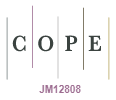Fugitive methane emissions around onshore gas fields using Quantum Gas Lidar technology: detection, visualisation, and quantification
Sebastian Hoerning A * and Philip J. Hayes AA

Sebastian Hoerning is a Research Fellow at The University of Queensland’s Gas & Energy Transition Research Centre. Sebastian has a Bachelor's, Master's and Doctorate in Environmental Engineering from the University of Stuttgart. His research focusses on geostatistics, stochastic modelling, and the incorporation of data into modelling workflows. |

Philip Hayes is a Geoscientist and Hydrogeologist with a degree in Physics and a PhD in Civil Engineering. His works bridges across single-phase aquifers and dual-phase reservoirs. Phil is Associate Professor of Water Resources and Gas Development at the University of Queensland’s Gas & Energy Transition Research Centre. |
Abstract
Methane, a greenhouse gas with significantly higher global warming potential than carbon dioxide, is a critical target for climate change mitigation under the Global Methane Pledge, which aims for 30% emissions reduction by 2030. Accurately measuring fugitive methane emissions is challenging due to their uncontrolled, sporadic and diffuse nature. This study evaluates a trailer-mounted Quantum Gas Lidar system for detecting and quantifying fugitive methane emissions from legacy coal exploration bores within onshore gas fields. The system uses an infrared laser to excite methane molecules, enabling infrared laser spectroscopy for high-resolution spatial and temporal detection and measurement of otherwise difficult-to-quantify emissions in both day and night-time conditions. Long-term field measurements demonstrated that continuous monitoring is essential to characterise emission variability and minimise weather-induced measurement artefacts. Our results demonstrate that Quantum Gas Lidar offers significant advantages over traditional methods, particularly in its ability to provide real-time visualisation and quantification of emission dynamics. This technology advances our capability to achieve Global Methane Pledge targets through improved environmental monitoring.
Keywords: continuous monitoring, emission quantification, environmental monitoring, fugitive emissions, gas production, global methane pledge, greenhouse gas, infrared laser spectroscopy, methane emissions, quantum gas lidar, real-time detection.
 Sebastian Hoerning is a Research Fellow at The University of Queensland’s Gas & Energy Transition Research Centre. Sebastian has a Bachelor's, Master's and Doctorate in Environmental Engineering from the University of Stuttgart. His research focusses on geostatistics, stochastic modelling, and the incorporation of data into modelling workflows. |
 Philip Hayes is a Geoscientist and Hydrogeologist with a degree in Physics and a PhD in Civil Engineering. His works bridges across single-phase aquifers and dual-phase reservoirs. Phil is Associate Professor of Water Resources and Gas Development at the University of Queensland’s Gas & Energy Transition Research Centre. |


